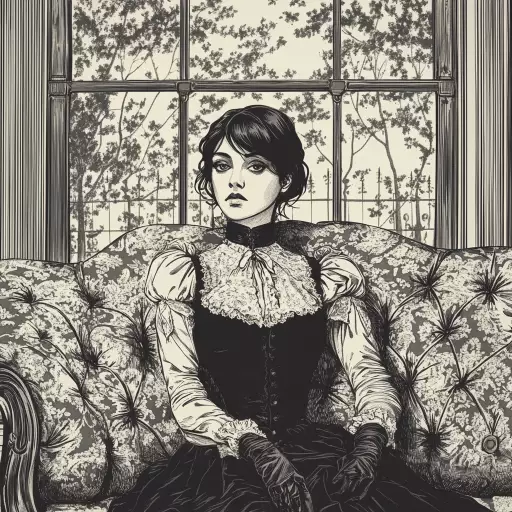Explore the Best AI Image Gallery

Beyond the Canvas: How AI-Generated Visual Content is Transforming Creativity
The landscape of visual creation is undergoing a seismic shift. No longer confined to human imagination alone, art and design are increasingly being shaped by the power of artificial intelligence (AI). AI-generated visual content, ranging from stunning images and videos to intricate 3D models, is rapidly becoming a ubiquitous force, blurring the lines between technology and creativity.
A New Dawn for Creative Expression
For artists and designers, AI-generated visual content presents both exciting opportunities and intriguing challenges. It empowers creators with novel tools to conceptualize and execute their ideas, breaking free from traditional constraints. Imagine a painter collaborating with an AI to explore abstract concepts or a fashion designer utilizing algorithms to generate unique textile patterns. These are just glimpses into the boundless potential that AI unlocks.
Unlocking Potential: Applications Across Industries
- Marketing and Advertising: AI can personalize marketing campaigns by generating customized visuals that resonate with specific target audiences, enhancing brand engagement and impact.
- Entertainment and Gaming: From creating realistic game environments to generating unique character designs, AI is revolutionizing the entertainment industry, pushing the boundaries of immersive storytelling.
- Education and Research: Educators can leverage AI-generated visuals to create interactive learning experiences, while researchers can utilize them to visualize complex data sets and uncover hidden patterns.
Navigating Ethical Considerations
As with any powerful technology, the rise of AI-generated visual content necessitates careful consideration of its ethical implications. Issues such as:
- Copyright and Ownership: Who owns the copyright to AI-generated art? How do we ensure fair attribution and compensation for human creators who may contribute to the process?
- Bias and Representation: AI algorithms are trained on existing data, which can perpetuate biases and stereotypes. It is crucial to address these biases to ensure that AI-generated content reflects a diverse and inclusive world view.
- Misinformation and Manipulation: The ability to create highly realistic synthetic media raises concerns about the potential for misuse, such as generating fake news or deepfakes.
The Future of Creative Collaboration
Looking ahead, the future of creativity lies in a harmonious blend of human ingenuity and AI capabilities. Instead of viewing AI as a replacement for human artists, we should embrace it as a powerful tool that augments our creative potential. The most compelling visual content will likely emerge from collaborations where human vision guides the artistic direction, while AI provides innovative technical solutions.
Key Trends Shaping the Future:
- Democratization of Creativity: AI-powered tools will empower individuals with limited technical skills to express themselves creatively.
- Hyper-Personalization: Visual content will be tailored to individual preferences and contexts, creating more engaging and immersive experiences.
- Real-Time Generation: AI will enable the creation of visual content on demand, fostering interactive and dynamic applications.
Conclusion
The emergence of AI-generated visual content marks a pivotal moment in the evolution of creativity. By embracing its potential while navigating its ethical complexities, we can unlock new frontiers of artistic expression and usher in an era of collaborative innovation that transcends the boundaries of imagination.












](https://images.ai-img.art/thumbnails/150/bddf3ae4a232290858389b933c866ad3be429ef2e25c23a9f4d7713ed6e44d0b.webp)







](https://images.ai-img.art/thumbnails/150/4289d1230b86a96c4d556636c3167bed0ef38f850826549517e4e45db4d87bf7.webp)









](https://images.ai-img.art/thumbnails/150/f67d9af3398150f2ab1bcf250717fea134275e2ca896252b54a4d9bb3719f9ac.webp)
](https://images.ai-img.art/thumbnails/150/008b5d5d49667cc2e93a5f8a8adfaa545963da99c39ff0901f5296294636400d.webp)

](https://images.ai-img.art/thumbnails/150/f9584153b4cddd8c9fab611dc10247549b275c59bc173251e37d0935874f9deb.webp)

](https://images.ai-img.art/thumbnails/150/c2c9c48b38fae37f0a457b80b084ed01ba803810fc8f488c8f610c03abc74049.webp)





